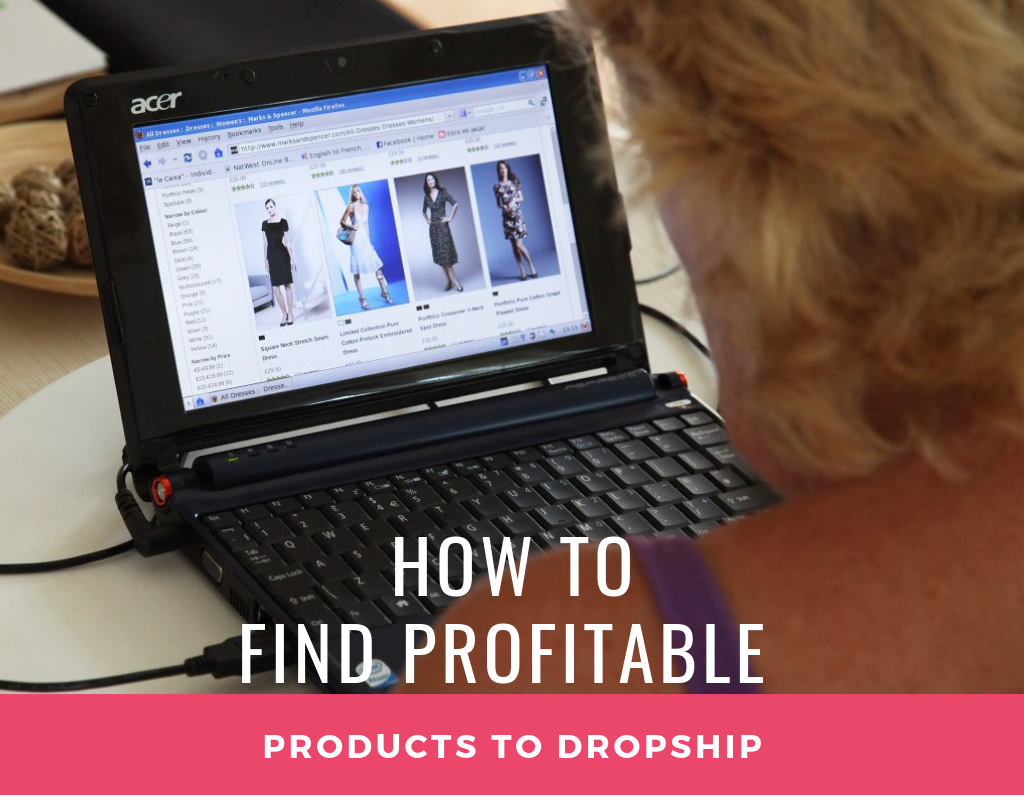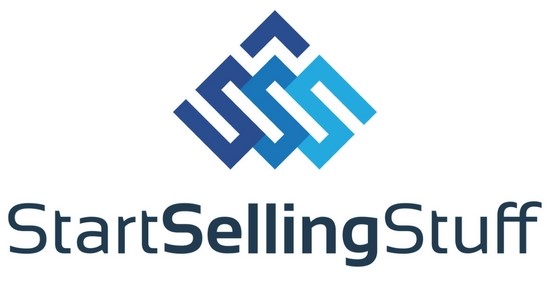How to Find Profitable Products to Dropship

Let us begin with 3 ways not to do it:
1.Spending hours thinking and being super creative
2.Watching the YouTube new product ads (crowdfunding and such)
3.Thinking of consumer “needs” (remember: Steve Jobs said people don’t know what they want until they see it) and forcing complicated connections between those and a product
Ok, so that’s how not to do it, in a nutshell.
I actually follow the way of the llama.
Llamas weather it out, smell the scene and go steady.
Neither turtle nor hare.
Hares make a run, make too many mistakes for my personal risk aversion (and who wants to spend more on mistakes than they have to, right?) Turtles stay on the sofa, playing Fortnite or on Netflix.
But llamas, let me tell you, llamas know where they are going.
They don’t care about being “first”, they arrive with the biggest load.
Biggest load being your bottom line.
Total amount of dollars of income.
Let others crash and burn. Pick up the scent and climb up the hill of riches. Like the llama.
Ok, so how to actually pick dropshipping products.
What is the llama approach, in practice?
It’s the market test.
1.Use other people’s FB ads (competitor analysis)
2.Look at best selling products on (other) stores
If this sounds too simple to you, probably you are -deep down- committed to being right or “being creative” (a noble motivation, but better channeled through arts and pastimes)
If, on the other hand, you are committed to business success, the market test approach is for you.
How to analyze your competitors on FB – method #1 (Pages to Watch)
Choose your competitors (and other people you want to benchmark)
Who exactly is your competition? People that sell the same product, right?
Well, wrong.
When we enter a mall, everyone’s competing for the same $20 in your pocket.
So, anyone with a product similar enough (if you buy the t-shirt for some activity, you may not buy the polo and viceversa) that can represent an alternative use of funds for any niche.
And yes, identical products are your primary suspect.
Besides identical products and substitute products, follow successful stores in your niche’s vecinity.
Bottom line: either you follow products you can dropship or you follow dropshippers you can learn conversion tactics from.
Watch their pages
Facebook actually has a tool for the task. It’s called “Pages to Watch”.
Your competitors or benchmarking targets won’t know you are following their steps.
Here:A Streamlined Look for Pages
Additionally, the insights module will show you several metrics regarding them, including posts by page admins, fan interactions and the five top-performing posts across all watched pages.
Last but not least, watch your audience while you’re at it
Brands unrelated to you or your niche store’s theme may be signaling
a)complementary products,
b)new tendencies to watch
How to analyze your competitors on FB – method #2 (Interest lists)
Another discreet way to watch other pages is to put them on a Facebook interest list.
The secret here is you can add pages a to a list without liking it (which may give your whole game away).
Click on Interests on the left sidebar of your personal Facebook home page or just go there directly.
Now click the Add Interests button. Voilá!
How to analyze your competitors on FB – method #3
Use free and paid metrics.
Simply Measured, it promises to let you
a) gain access to the demographics, psychographics, and location of unique people who talk about your brand,
b) find influencers based on reach, engagement, and audience segment and,
c) compare the percentage of mentions related to your brand against those of competitors, for any defined topic.
Picking the winners among Shopify stores – method #1 (Oberlo’s rankings)
Oberlo provides a list of the most successful dropshipping stores of the year.
Here:
Let’s call the process SEI.
1) study,
2) emulate,
3) improve.
In super dynamic markets any form of armchair planning or theorizing may prove lethal.
Enthusiasm, along with time, is the ultimate resource for entrepreneurs. Just study what the successful ones are doing on every category.
Emulate them with close attention to your own identity and niche priorities.
Improve upon what you emulated through A/B testing (test, test, test!).
Picking the winners among Shopify stores – method #2 (Shopify apps)
A very clever way to find hot selling products for your Shopify store is to go to Shopify apps.
The idea here is to crosscheck on successful Shopify stores that are selling successfully.
The best products to sell on Shopify would will be listed on successful Shopify stores.
Shopify’s bestselling products are waiting to be discovered, listed on popular stores.
Select an app that has great customer reviews.
Scroll down.
Now you will have plenty of store links with every single review from their owners. Happy owners (say you search “best selling” and find cart abandonment apps or pop-up management apps and other power tools for dropshippers) of power tools are ready to be visited and their products studied by you.
Once you have opened the URL the review provides, just add “/collections/all?sort_by=best-selling” at the end as we did in above technique.
You will get best selling and hot products for any niche you want to study, emulate and improve from any store by using this technique.
Picking the winners among Shopify stores – method #3 (MyIP.ms)
A third product research method to find hot products to sell in your store is to use a website called MyIP.ms which allows you to find all of the websites hosted from the Shopify platform.
MyIP.ms lists all stores operated on the Shopify platform.
MyIP.ms Shopify directory is the place to find products if you find yourself completely lost (or are just beginning).
The website ranks Shopify stores by country, hosting city, global rating and IP address.
Steps:
1) Pick IP Owner/Parent IP Owner/Hosting,
2) select Shopify as owner.
This will allow you to see the top Shopify stores that are getting the most traffic and probably making the most sales.
In sum, it allows you to find Shopify stores on the basis of their popularity.
Picking the winners among Shopify stores – method #4 (Buzzsumo)
Buzzsumo is a website that allows you to analyze the best performing content on Facebook, Twitter, Pinterest, and LinkedIn.
Just type in the product/topic or a keyword that you’re interested in so if you’re selling hats, you type “felt hats” in the Buzzsumo search bar and it will show the highest trending articles in the felt hats niche. Study, emulate, improve.
Picking the winners among Shopify stores – method #5 (Pinterest+Aliexpress)
This one is very simple.
Go to Pinterest. Search for a description (“felt hats”, in our previous example) and find the trending products that are getting pinned the most.
Do the same on Aliexpress. Find the coincidences. Find the profit margin after costs. Voilá!
Picking the winners among Shopify stores – method #6 (Instagram+Aliexpress)
This one is very similar to the above, except with hashtags.
Enter Instagram. Search for a description (“felt hats”, in our previous example) and find the trending products that are getting the most likes.
Do the same on Aliexpress. Find the coincidences. Calculate the profit margin after costs. Voilá!
Picking the winners among Shopify stores – method #7 (Ebay)
Find the best selling eBay products using Watchcount.com.
The Watchcount.com allows you to try different keywords and find the best selling products.
Pick
1) MostWatched 2.0
and 2) choose a country
Then 3) use the relevant keywords.
You are ready to go.
Additional Competition Analysis Tactics
Add items to your competitors’ carts with the help of a friend.
This will usually trigger their retargeting ads or abandoned cart email system which will give you great insight in how they sell their products.
You’ll find patterns in how they present products, their choice of words and their overall marketing strategy.
Pay attention to which social networks your competition is and isn’t active on.
If they focus on Facebook and Instagram but not Pinterest, you might have a competitive advantage to start marketing on Pinterest if you sell a very visual product.
You definitely want to be on the same platforms your competitors are on.
However, you also want to find little online nooks where there’s a greater opportunity for your brand to monetize.
Browse the pages of their store.
Do they run a niche blog?
How does their About Us page look like?
What type of info do they include on each product page?
Do they use the supplier’s images or do they upload their own?
Do they create videos too?
Analyze every detail. You might not know how well something converts or not, but it might be worth testing out on your store.
Read the comments on their social media.
What comments do they get?
Positive, neutral or negative?
Use the negative comments to your advantage and do the opposite on your store. Needless to say, avoid the temptation to leave negative comments on a competitor’s social media or write a negative review online.
Some online stores don’t have a best-sellers list.
However, for many Shopify stores, you can add “?sort_by=best-sellers” in the URL to find them for each category. (Web-savvy store owners are now blocking those URLs so it won’t work on all stores.)
Using SEO tools, find out the keywords your competitors rank high for.
Now you can create content around those keywords so you can attract more traffic to your store.
You can also use tools like BuzzSumo and SocialMention to find out which articles get the most social sharing so you can write more content like that for your own store.
Use price comparison websites to determine how your competitors price their products.
While you won’t always want to compete on price, it can help you understand the price range to sell your products at.
Price is a value signal, remember.
Keep in mind that with dropshipping you will never win the price war, you’re not the manufacturer or the only seller. That’s why niche stores are about added value and emotional context.
